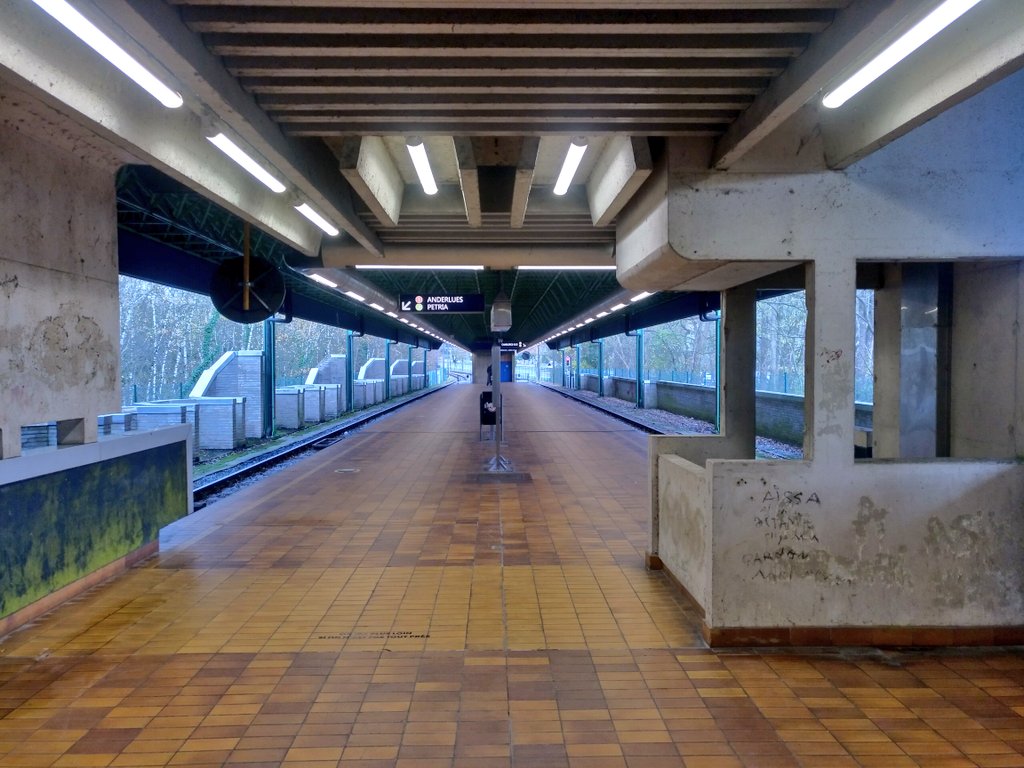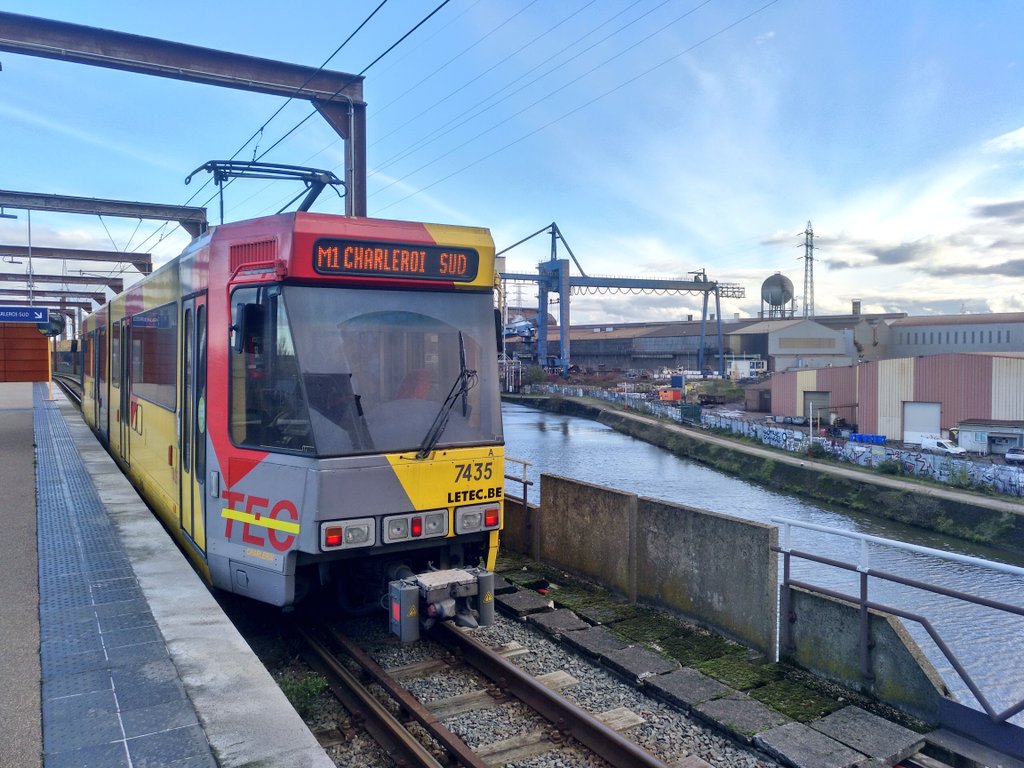Yesterday I traveled from Barcelona to Brussels. By train. By #TrainDeNuit to be more precise
One of those key 🇪🇺🛤️ connections that desperately needs a good #NightTrain. Because the current one is slow & "invisible" for most users
Follow this TransPyrenees 🚞 night train trip



One of those key 🇪🇺🛤️ connections that desperately needs a good #NightTrain. Because the current one is slow & "invisible" for most users
Follow this TransPyrenees 🚞 night train trip
https://twitter.com/zanartuvdg/status/1437410031339806720




The trip starts at Barcelona Sants station. Quite a horrible station for such a beautiful city.
We board the suburban train R3 towards Latour de Carol. One of the only 4 trains per day that make the full 166 km trip.
Tickets bought from the machine, 11.50€, they never sell out



We board the suburban train R3 towards Latour de Carol. One of the only 4 trains per day that make the full 166 km trip.
Tickets bought from the machine, 11.50€, they never sell out




First difficulty of this trip: good luck finding this "commuter" train on a travel searcher!
Not even the mighty @DB_Bahn knows about this train !!
The only place where you'll find the complete timetable is on the @rodalies website… not very helpful 😕
rodalies.gencat.cat/en/horaris/tot…
Not even the mighty @DB_Bahn knows about this train !!
The only place where you'll find the complete timetable is on the @rodalies website… not very helpful 😕
rodalies.gencat.cat/en/horaris/tot…
This line crosses Catalonia from Barcelona all they way north to the Pyrenees. From suburbia to the high mountains.
We left Barcelona with 29 degrees and lots of humidity 🥵, some hours later we could feel the chilly breeze as doors opened on some stations… 13 degrees! 🥶



We left Barcelona with 29 degrees and lots of humidity 🥵, some hours later we could feel the chilly breeze as doors opened on some stations… 13 degrees! 🥶




We were lucky, since we got a "refurbished" train, with somewhat softer seats. Nevertheless, still not ideal for 3h trips…
Also, check those signs! I guess many of you weren't expecting ⛷️ signs on Catalan trains... 😂 as if Rodalies would be the SBB (if only... 🥲)

Also, check those signs! I guess many of you weren't expecting ⛷️ signs on Catalan trains... 😂 as if Rodalies would be the SBB (if only... 🥲)


The line climbs rather steep slopes up the Vall de Ribes, reaching a spiral tunnel followed by a really long "standard" tunnel. It almost feels like the Gotthard! 😄
After the tunnel, we reach "La Molina" station, summit of the line at 1420 m high, located within a ski resort.


After the tunnel, we reach "La Molina" station, summit of the line at 1420 m high, located within a ski resort.



🚞🏔️ A nerdy fact about the "Ferrocarril Transpirinenc", is that, on the southern side, it's the highest (1494 m) of all Iberian gauge railways
But also on the northern side, the track will go even slightly more up, 1562 m, making it the highest french rail line outside the Alps
But also on the northern side, the track will go even slightly more up, 1562 m, making it the highest french rail line outside the Alps
After La Molina, we go down towards the Cerdanya plateau, a relatively flat area in the middle of the Pyrenees. Elevation 1200 m
Most passengers get off at Puigcerdà, the main town of the area, and just a couple continue on board for the short hop to last stop.

Most passengers get off at Puigcerdà, the main town of the area, and just a couple continue on board for the short hop to last stop.


🛂🚧 Border nerds will find this area interesting. Right next to Puigcerdà there's the exclave of Llívia, which had a rather surrealist "war" with 🇨🇵 in the 20th century 😄
en.m.wikipedia.org/wiki/War_of_th…
Nevertheless, people feel mostly Catalan on both sides of the "imposed" border.
en.m.wikipedia.org/wiki/War_of_th…
Nevertheless, people feel mostly Catalan on both sides of the "imposed" border.

The 4km intl stretch between Puigcerdà and La Tor de Querol is rather unique. Instead of one track with double gauge, there's two tracks. One iberian, one standard.
No french train has regularly crossed since 1969, but thankfully @rodalies does make it still across the border.


No french train has regularly crossed since 1969, but thankfully @rodalies does make it still across the border.


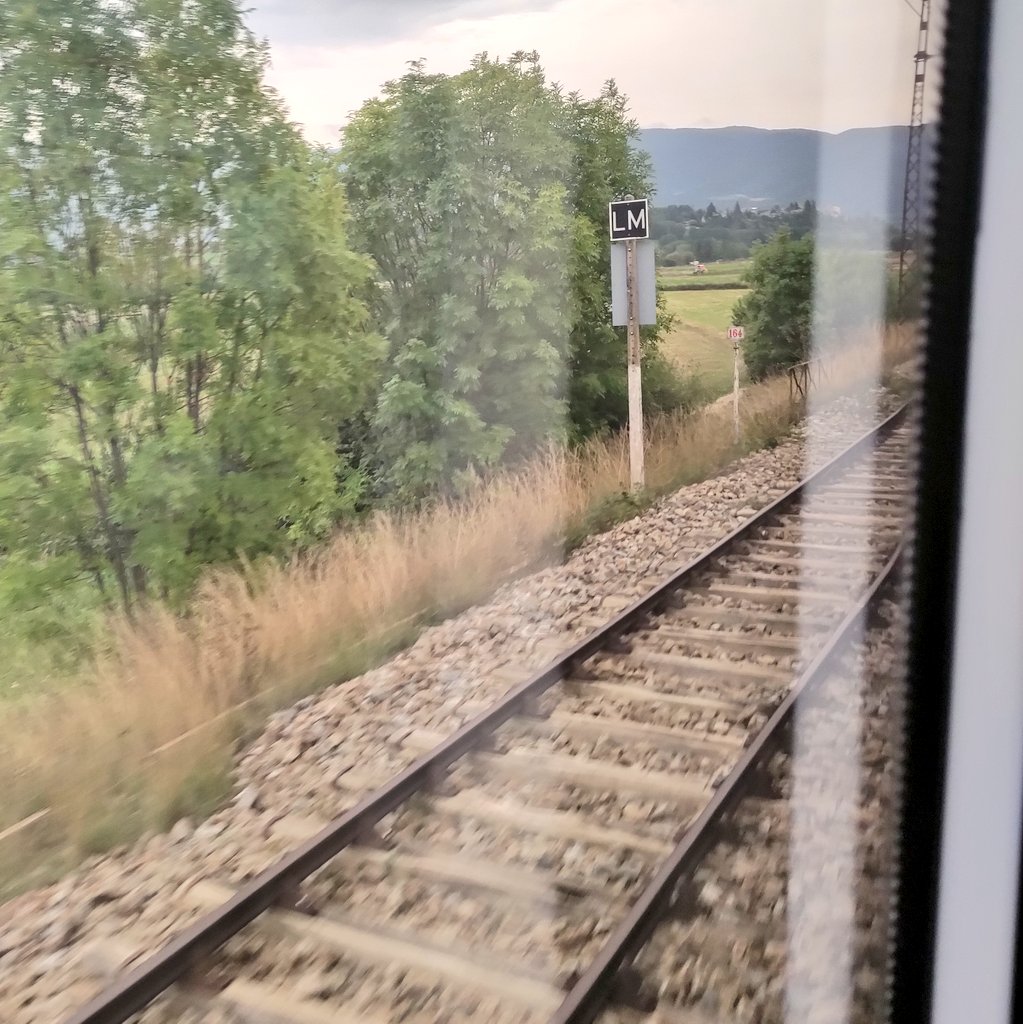
I was expecting some kind of border sign... this is what I got 😄
"Sale de RFIG", leaving RFIG, the Spanish acronym used for the rail lines considered of "state importance".
In other words, leaving Spanish state, entering France.
"Sale de RFIG", leaving RFIG, the Spanish acronym used for the rail lines considered of "state importance".
In other words, leaving Spanish state, entering France.

Linguistic sidenote here
@SNCF calls this station "Latour-de-Carol"
@rodalies uses the Catalan spelling in timetables "La Tor de Querol"
@Adif_es & the displays on Renfe trains use the Spanish spelling "La Tour de Carol"
It can be confusing when searching online timetables 🤪
@SNCF calls this station "Latour-de-Carol"
@rodalies uses the Catalan spelling in timetables "La Tor de Querol"
@Adif_es & the displays on Renfe trains use the Spanish spelling "La Tour de Carol"
It can be confusing when searching online timetables 🤪

La Tour de Carol. End of the line. Quite literally.
Iberian gauge trains can't go any further.
Approximately 3 hours after departure from Barcelona, we arrive at the French border station, where our #NightTrain #TrainDeNuit awaits for us.

Iberian gauge trains can't go any further.
Approximately 3 hours after departure from Barcelona, we arrive at the French border station, where our #NightTrain #TrainDeNuit awaits for us.


We have 45 minutes to change trains which is OK. I've heard horrible stories of some years ago where 🇪🇦🇫🇷 timetables didn't match and travelers had to spend 3h waiting here
Enough time to grab a sandwich for dinner at the "Bistrot de la Gare" & take some pics around the station


Enough time to grab a sandwich for dinner at the "Bistrot de la Gare" & take some pics around the station



The station is rather impressive - as one would expect for an old border station - and has a distinct high-mountain look.
A little sign also reminds us that this station was one of the routes that Spanish Republicans took on their way to exile, as they escaped fascism in 1939 ✊🏼



A little sign also reminds us that this station was one of the routes that Spanish Republicans took on their way to exile, as they escaped fascism in 1939 ✊🏼

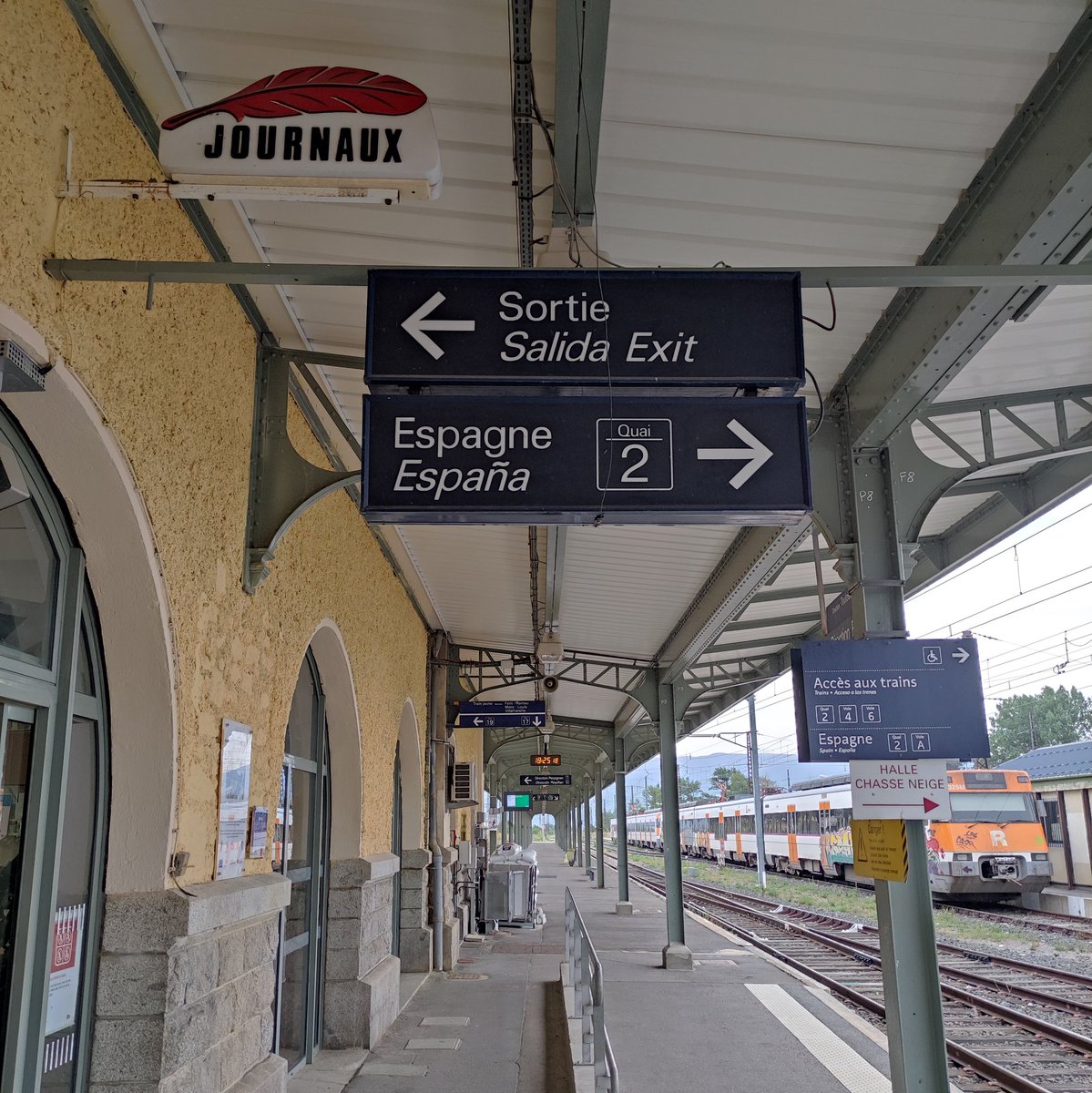
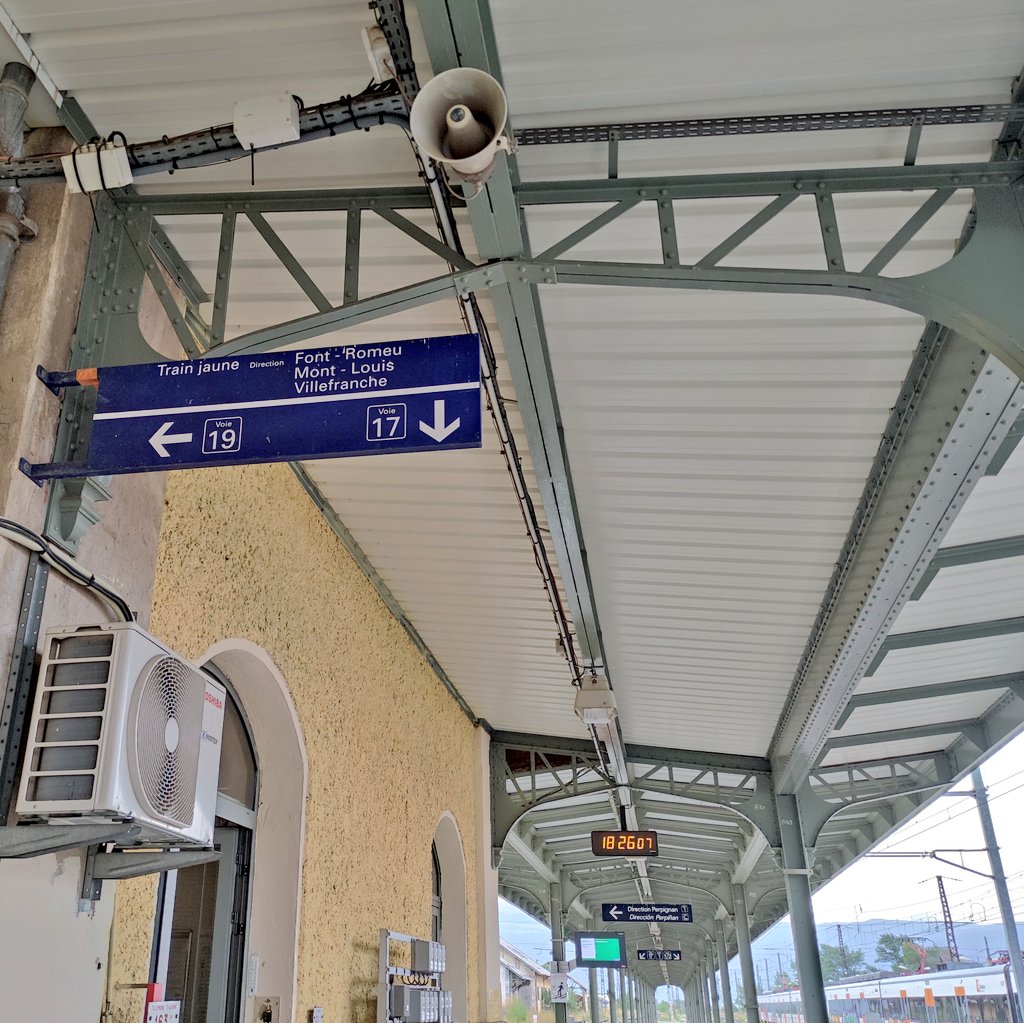

This is also one of the few stations in Europe (the only one perhaps?) with 3 different gauges.
1668mm for Rodalies trains going south, 1435mm for SNCF trains going north and 1000mm for the "Train Jaune" (the wonderfully retro & scenic "yellow train") which also uses 3rd rail ⚡



1668mm for Rodalies trains going south, 1435mm for SNCF trains going north and 1000mm for the "Train Jaune" (the wonderfully retro & scenic "yellow train") which also uses 3rd rail ⚡




And here it is! Here's our Intercités de Nuit, direct from the heart of the Pyrenees to the French capital Paris.
Only 3 cars make it from Latour-de-Carol, one couchettes, two seated. Which should be more than enough.
More cars will be attached to our train in Toulouse.



Only 3 cars make it from Latour-de-Carol, one couchettes, two seated. Which should be more than enough.
More cars will be attached to our train in Toulouse.




Little appreciation tweet for the loco that will bring us north to Paris.
A beautiful retro #NezCassé loco, series BB 7200, hauling 3 cars. Nez-Cassé and #Corail make a perfect match.
The loco is still painted in the original "béton" livery of the 80s.
Fantastic.



A beautiful retro #NezCassé loco, series BB 7200, hauling 3 cars. Nez-Cassé and #Corail make a perfect match.
The loco is still painted in the original "béton" livery of the 80s.
Fantastic.




Due to covid, couchettes are limited to 4 people, so we're "upgraded" to "1st class" (1st class & couchettes shouldn't match, but well… 😒)
You're offered a sheet/sleeping bag, a super comfy pillow and some toiletries. Basic but good 👍🏼
The windows open on the compartment side


You're offered a sheet/sleeping bag, a super comfy pillow and some toiletries. Basic but good 👍🏼
The windows open on the compartment side


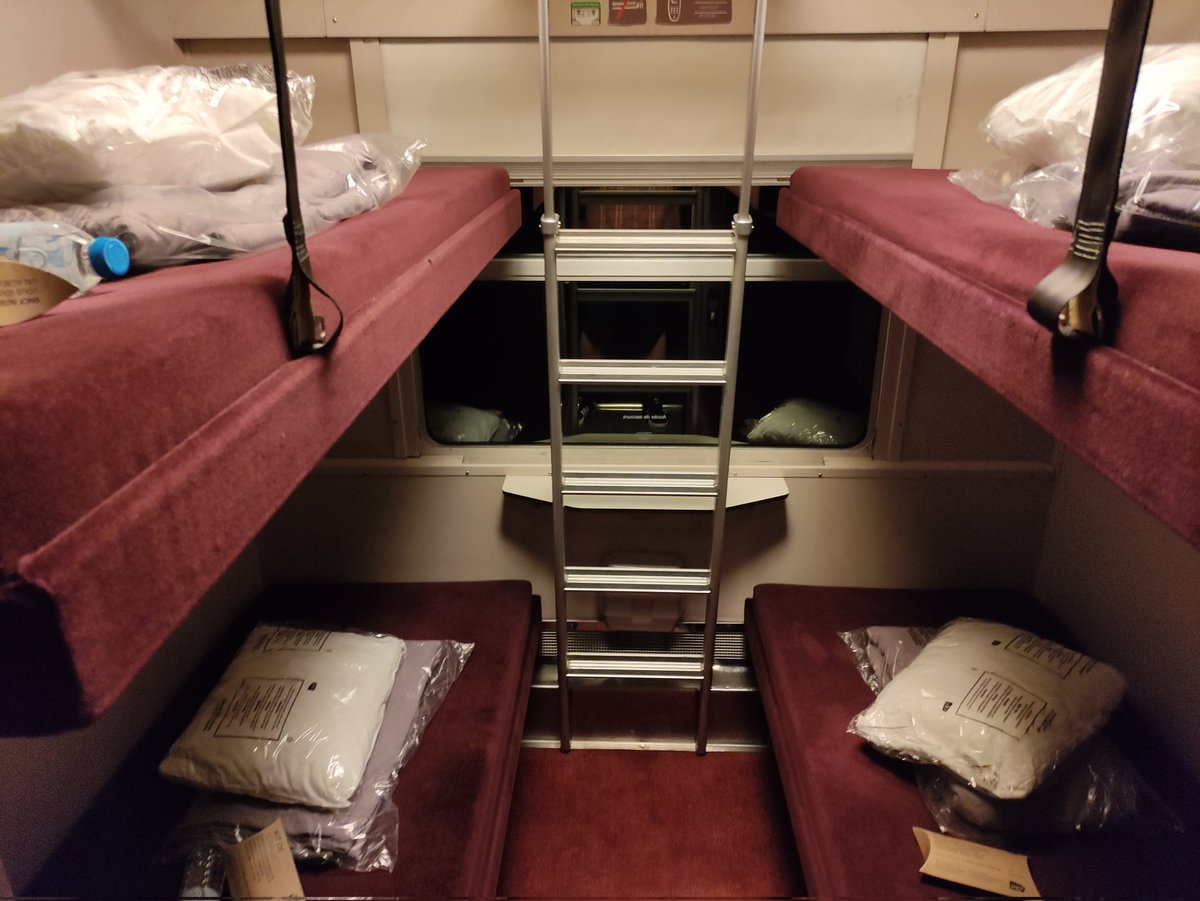
#Bahnzeit at Latour-de-Carol 







And we're off exactly on time.
At that moment there were only about 10/15 passengers onboard.
But we're on a really remote place and the connection with Barcelona is... pretty useless 🤷🏻♂️
But the train would get busy quite soon.
At that moment there were only about 10/15 passengers onboard.
But we're on a really remote place and the connection with Barcelona is... pretty useless 🤷🏻♂️
But the train would get busy quite soon.

And that's the route for the 12 hour night train.
A whole night crossing the "hexagone".
Departure 19:00 from Latour-de-Carol.
Arrival 06:52 to Paris-Austerlitz.
A whole night crossing the "hexagone".
Departure 19:00 from Latour-de-Carol.
Arrival 06:52 to Paris-Austerlitz.

Since I mentioned it, here's some pics of the 2 #Corail cars that travel together with the couchettes car.
These are one of the most comfortable trains in Europe. Retro vibes + comfort. Can't ask for more.
Although… for a 12h long night train, better get a (bunk) bed.

These are one of the most comfortable trains in Europe. Retro vibes + comfort. Can't ask for more.
Although… for a 12h long night train, better get a (bunk) bed.


The route from Latour-de-Carol to Ax-les-Thermes is just absolutely stunning.
We're on the highest, standard gauge, adhesion (non-rack) railway of Europe! And you can definitely feel the gradient as we roll down.
Just open the window, and let the Pyrenees surround you 🚞🏔️



We're on the highest, standard gauge, adhesion (non-rack) railway of Europe! And you can definitely feel the gradient as we roll down.
Just open the window, and let the Pyrenees surround you 🚞🏔️




🎥 🚞🏔️ #FensterAuf, rolling down the Pyrenees, on the night train direct to Paris.
Loco-hauled train means... that there's a fantastic view at the rear of the train!
As you see top speed isn't amazing. Most of the route isn't straight, as we decrease altitude on a winding route.
But views are wonderful. The track surrounded by the mountains.
As you see top speed isn't amazing. Most of the route isn't straight, as we decrease altitude on a winding route.
But views are wonderful. The track surrounded by the mountains.
Little appreciation message for @TER_Occitanie
Their paper timetables include the connecting times for the trains to/from Barcelona. 👏👏
Maybe @rodalies could do the same 😒
These are the little details that make cross border rail traffic, a little easier.
cc @jonworth
Their paper timetables include the connecting times for the trains to/from Barcelona. 👏👏
Maybe @rodalies could do the same 😒
These are the little details that make cross border rail traffic, a little easier.
cc @jonworth

At 21:41 we arrive at Toulouse-Matabiau station. There's a 54 minute scheduled stop here.
Some shunting will take place as our 3 cars are attached to the other (longer) branch of the night train.
Time to walk a bit and take some pics of our night train actually during the night



Some shunting will take place as our 3 cars are attached to the other (longer) branch of the night train.
Time to walk a bit and take some pics of our night train actually during the night

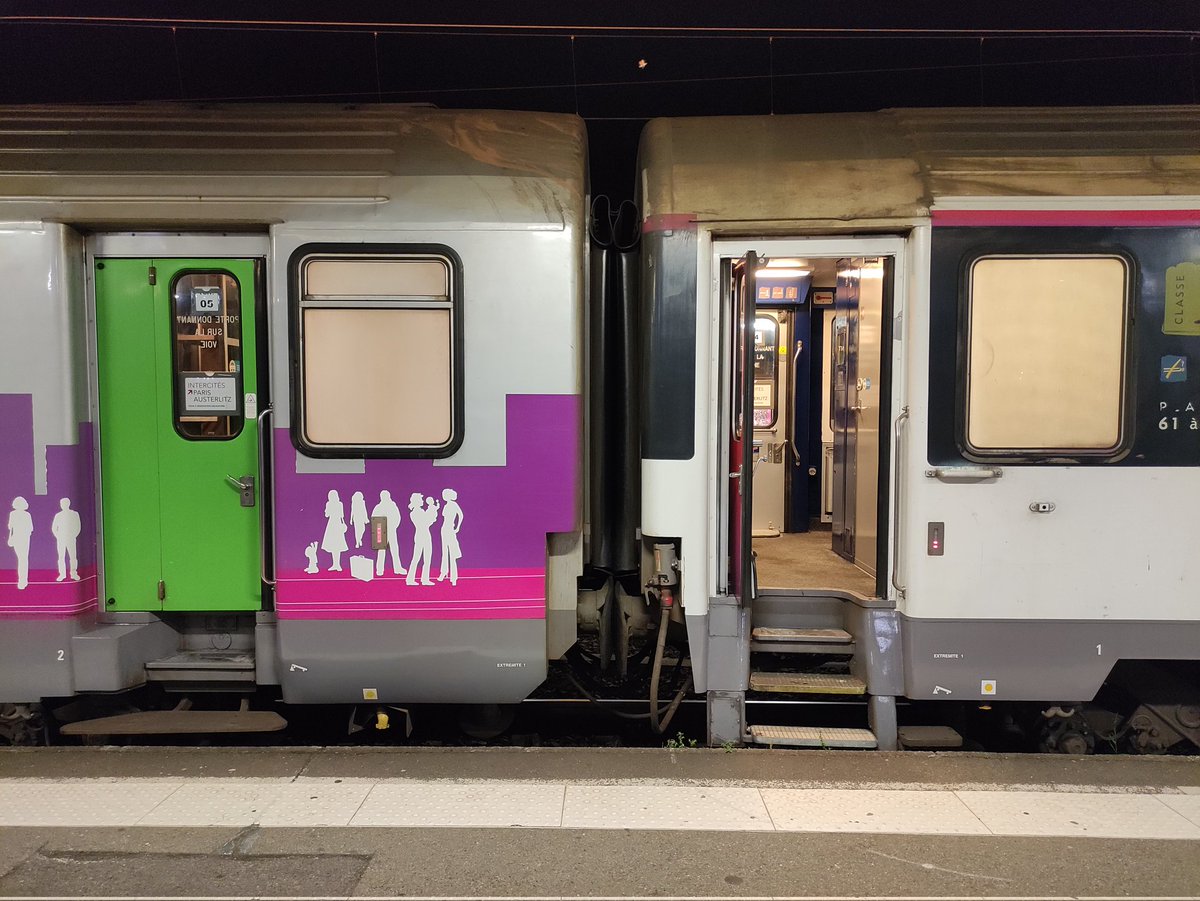
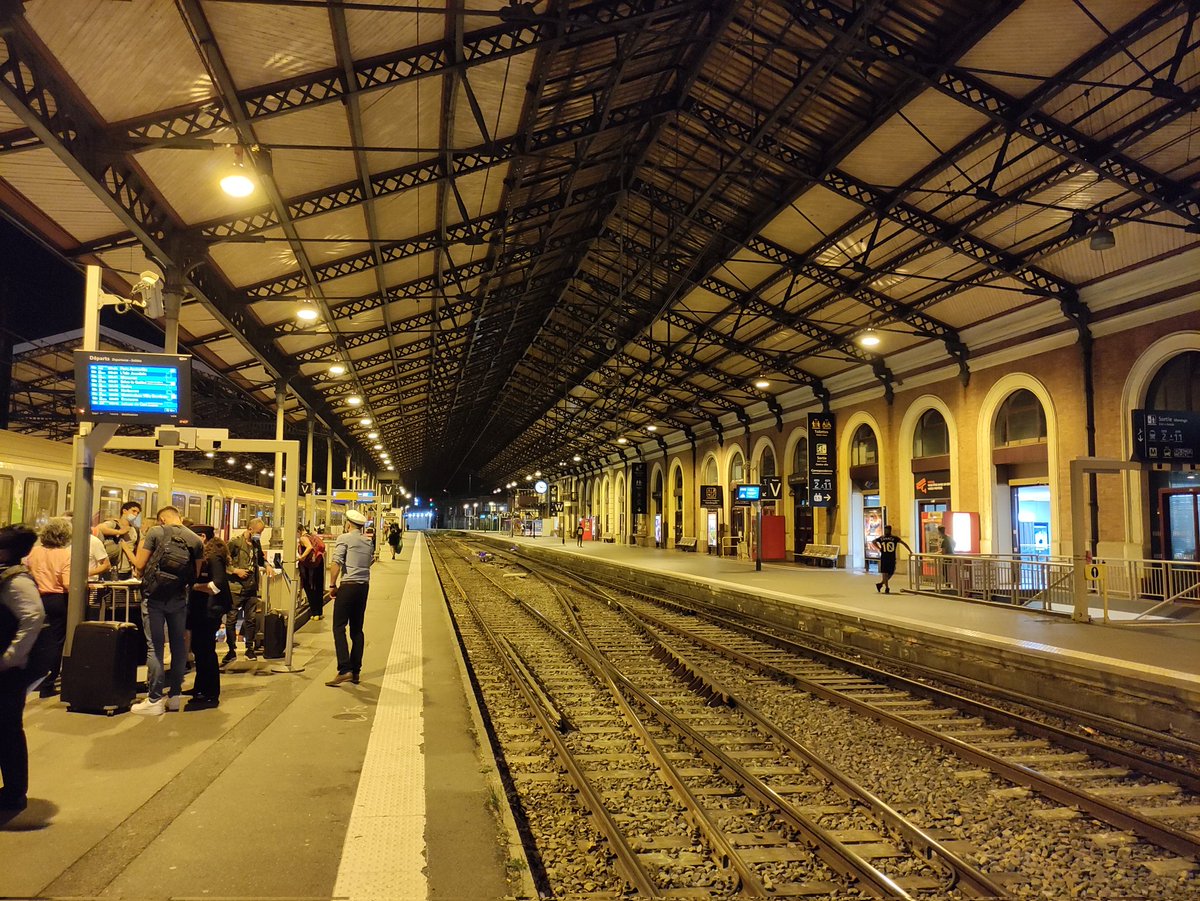

#Bahnzeit at Toulouse Matabiau 




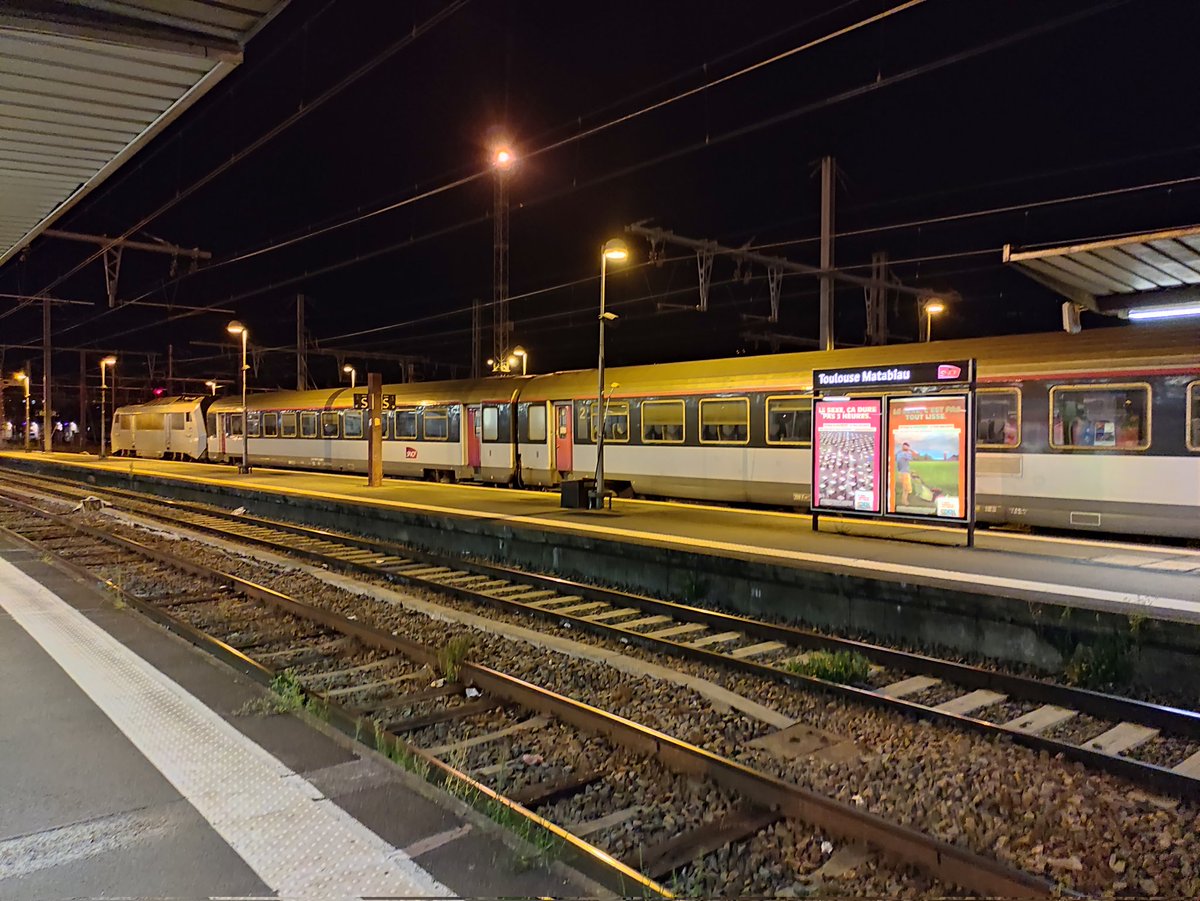


22:32 ready for departure.
The long #IntercitesdeNuit is about to leave Toulouse for a direct night run to Paris.
Depart after dinner. Sleep onboard. Arrive early in the morning.
No airports, no queues, no waking up at 3:45am for an early morning flight.
We need more of these
The long #IntercitesdeNuit is about to leave Toulouse for a direct night run to Paris.
Depart after dinner. Sleep onboard. Arrive early in the morning.
No airports, no queues, no waking up at 3:45am for an early morning flight.
We need more of these
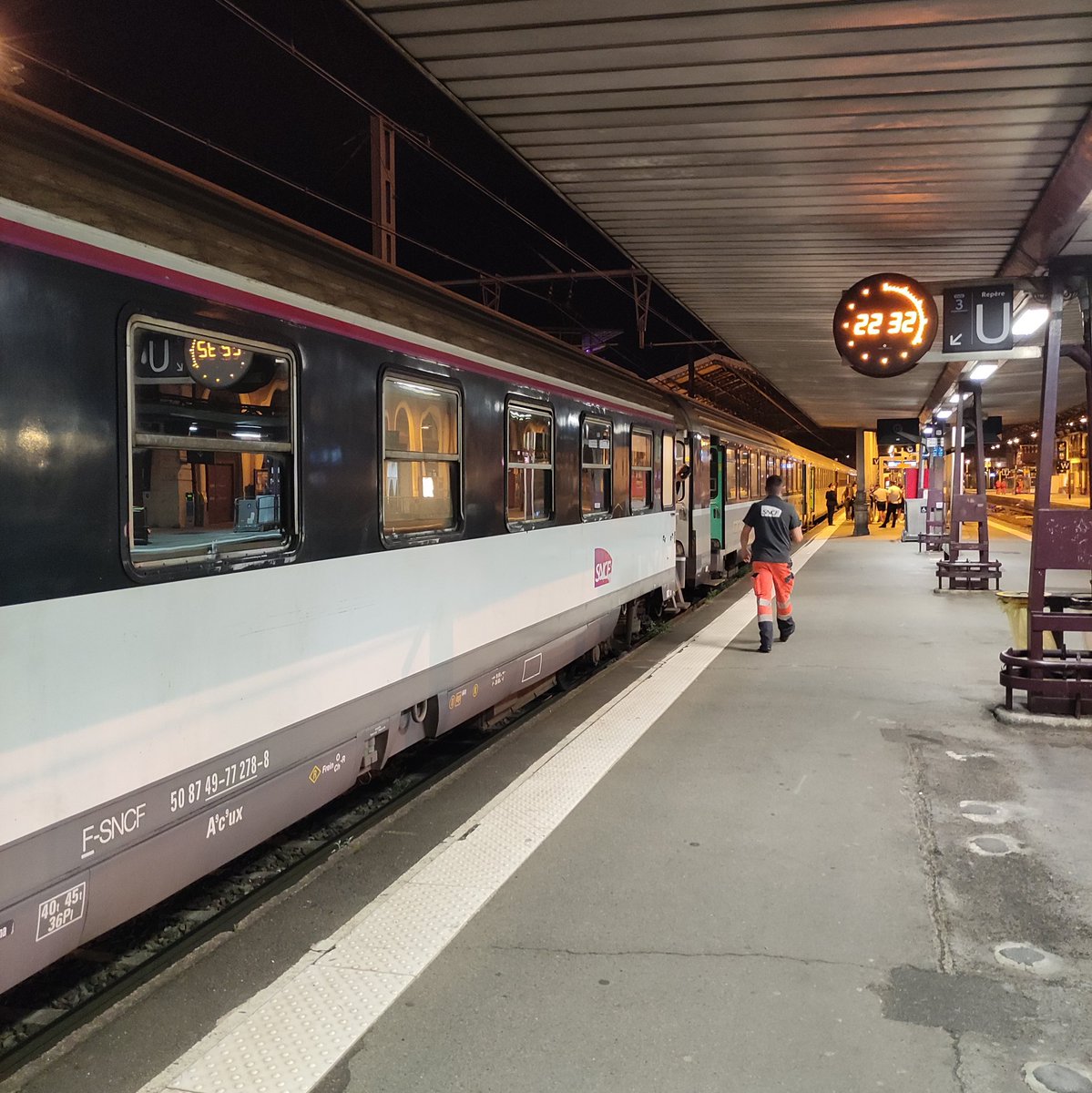
Arrived exactly on time to Paris at 06:52.
The sleep was really good. The "1st class couchette" is really comfortable. The pillow is also very good. Just note, no plugs.
Arrival into the formerly beautiful Austerlitz station. Now it's just a mess full of scaffoldings 😅



The sleep was really good. The "1st class couchette" is really comfortable. The pillow is also very good. Just note, no plugs.
Arrival into the formerly beautiful Austerlitz station. Now it's just a mess full of scaffoldings 😅




Changing trains in Paris… means taking the metro between mainline stations.
At least in Austerlitz you're treated with rather unique elevated platforms, literally above the railway station.
For us is a very convenient ride on metro line 5, direct to Gare du Nord.



At least in Austerlitz you're treated with rather unique elevated platforms, literally above the railway station.
For us is a very convenient ride on metro line 5, direct to Gare du Nord.
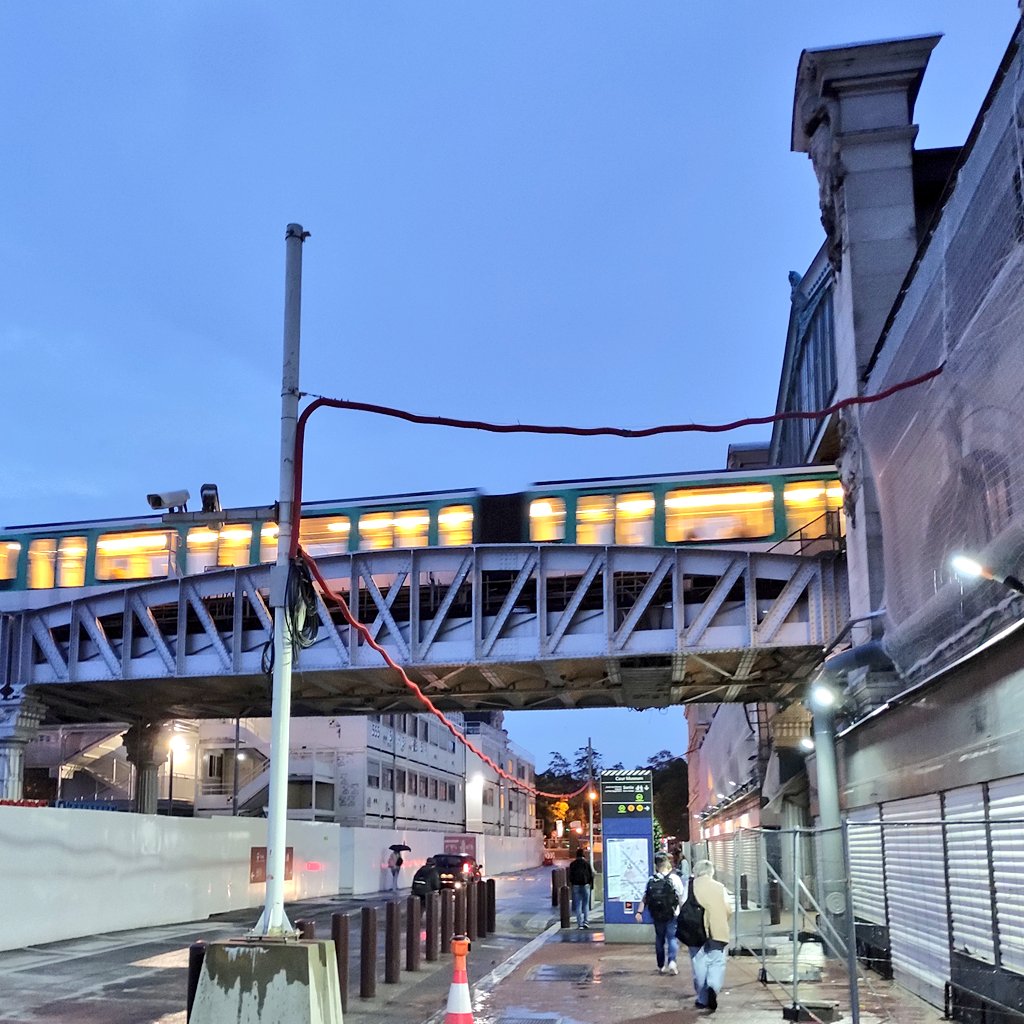



At Gare du Nord, my friend and I say goodbye. He will go upstairs to check in for his Eurostar. And endure all the Brexit + covid paperwork. And get stamped out of the EU 😢
For me it's just a simple ticket check and I'm onboard my Thalys direct to Brussels.


For me it's just a simple ticket check and I'm onboard my Thalys direct to Brussels.



As I board my train, a bonus for my trip! Another #NezCassé comes into the next platfom, pulling a @TERHDF regional service with old-school double decker passenger cars. 







Last train of the route.
The fast Thalys will bring me from the centre of Paris, to the centre of Brussels in 1h20.
And I was lucky, since "comfort" was cheaper than "standard" when I bought my tickets online 🤷🏻♂️😀



The fast Thalys will bring me from the centre of Paris, to the centre of Brussels in 1h20.
And I was lucky, since "comfort" was cheaper than "standard" when I bought my tickets online 🤷🏻♂️😀




Made it! Brussel Zuid 🇧🇪🇪🇺. Thuis.
So that's Barcelona - Brussels via the Pyrenees night train. Scenic? Absolutely! Go and do it!
Useful, time effective and easy to find & book? Not at all.
If we want people to shift from plane to train, then we need more night trains. 🚃🛌🌙

So that's Barcelona - Brussels via the Pyrenees night train. Scenic? Absolutely! Go and do it!
Useful, time effective and easy to find & book? Not at all.
If we want people to shift from plane to train, then we need more night trains. 🚃🛌🌙


P.S. as always, I got all the details for this route at the fantastic site of @seatsixtyone
So next time you're flying around Europe, go and check if there's any rail alternative. You'd be surprised!
So next time you're flying around Europe, go and check if there's any rail alternative. You'd be surprised!
• • •
Missing some Tweet in this thread? You can try to
force a refresh
























